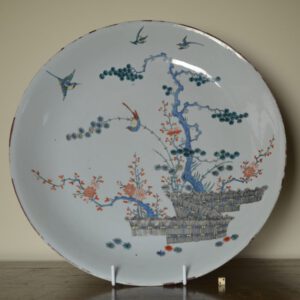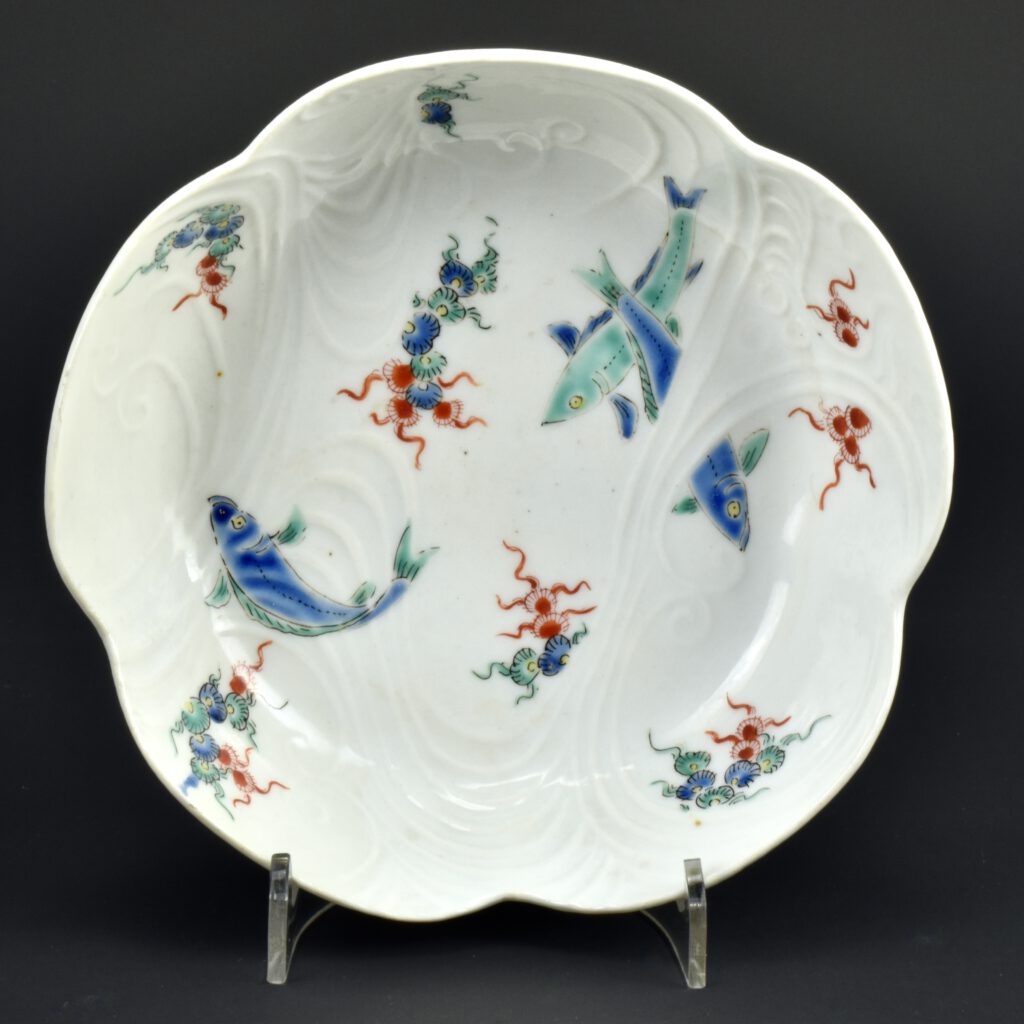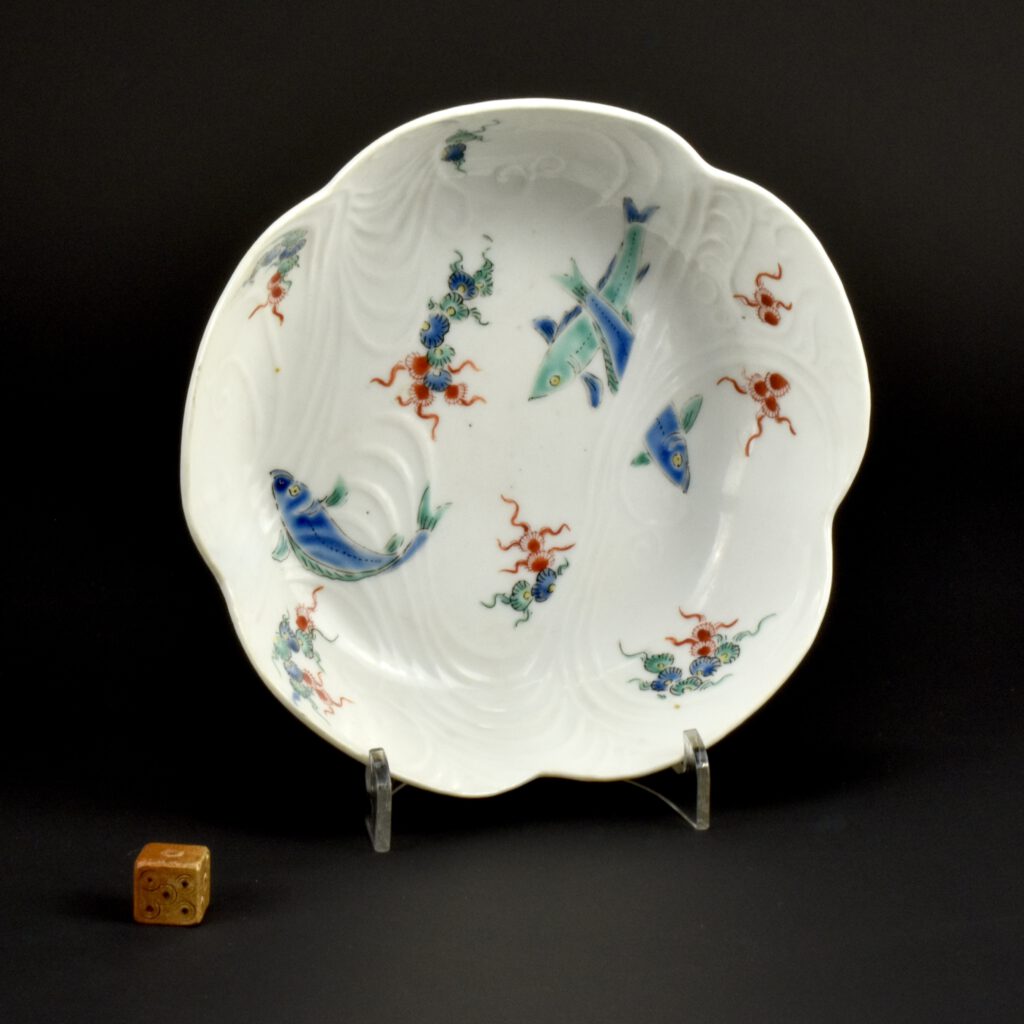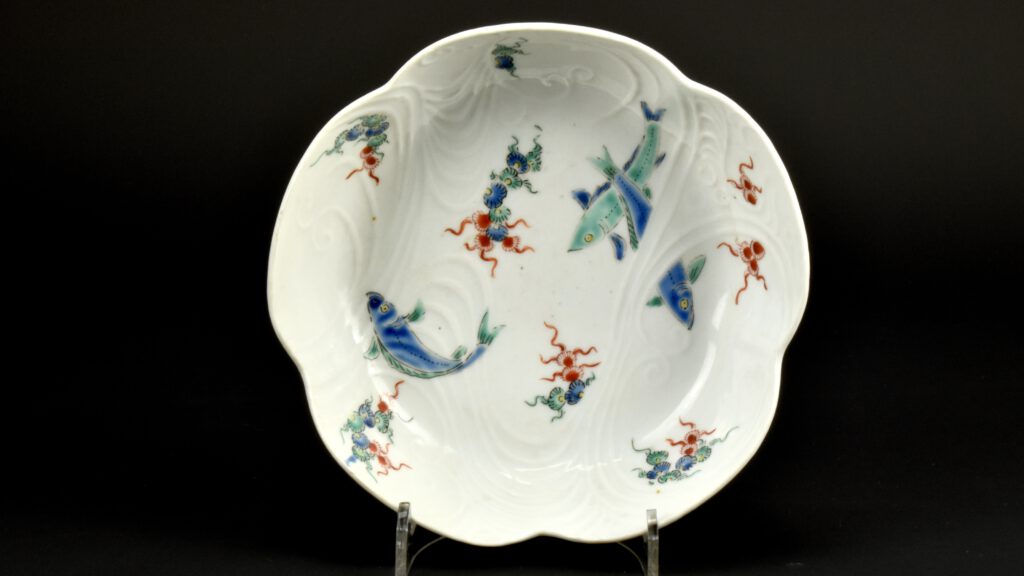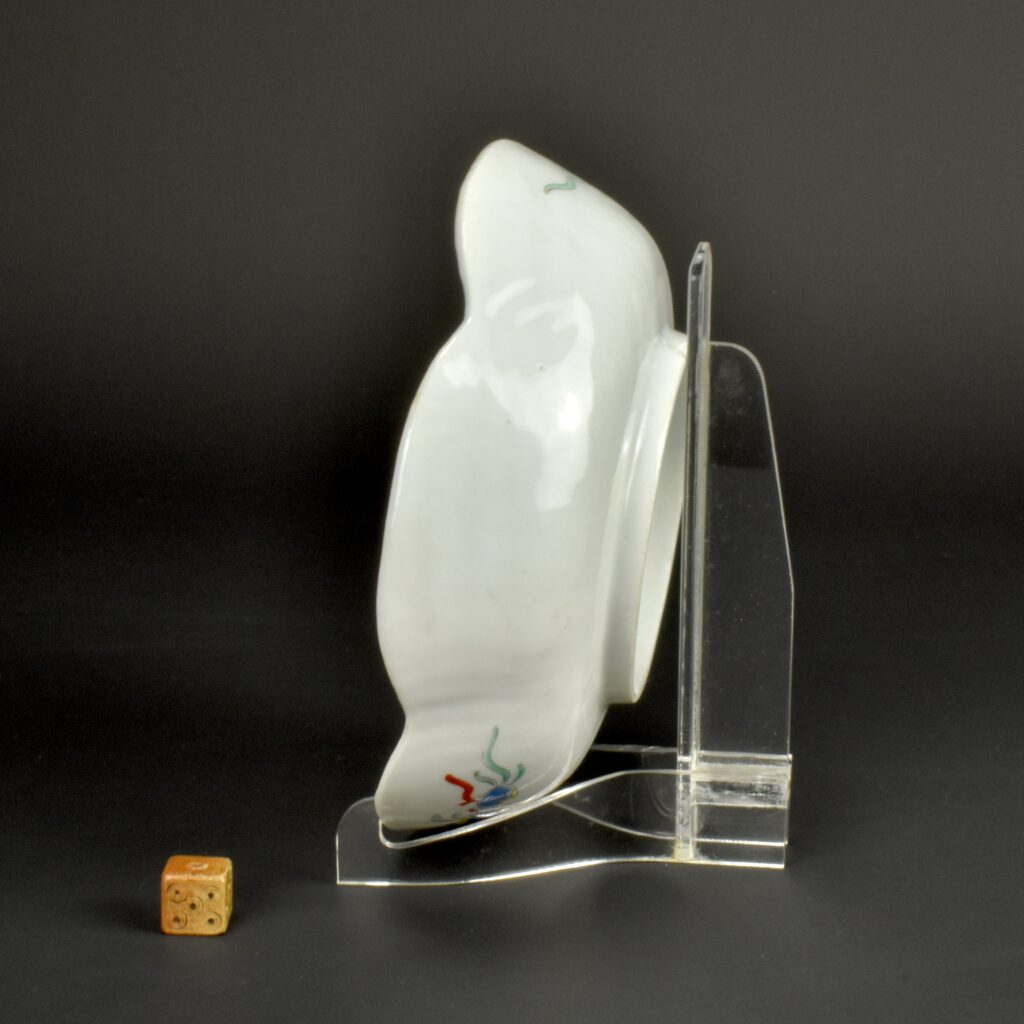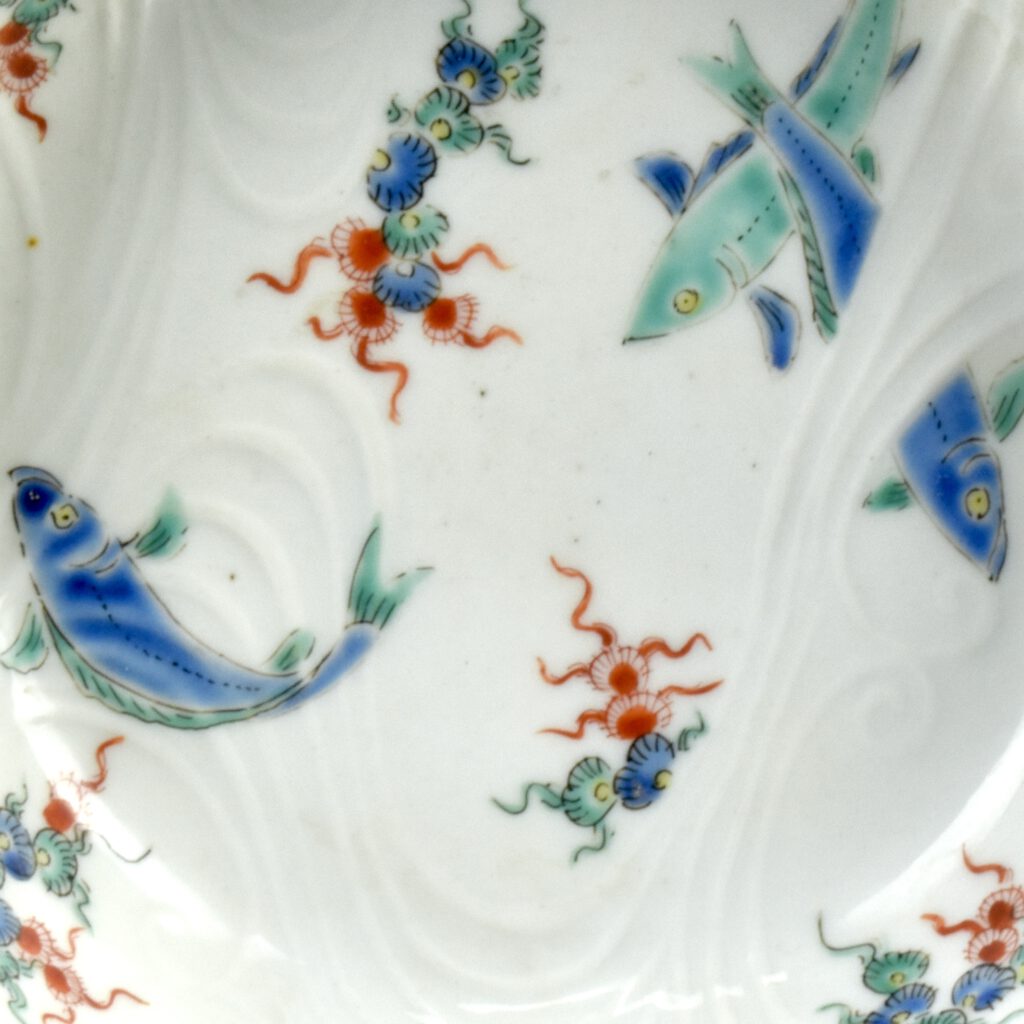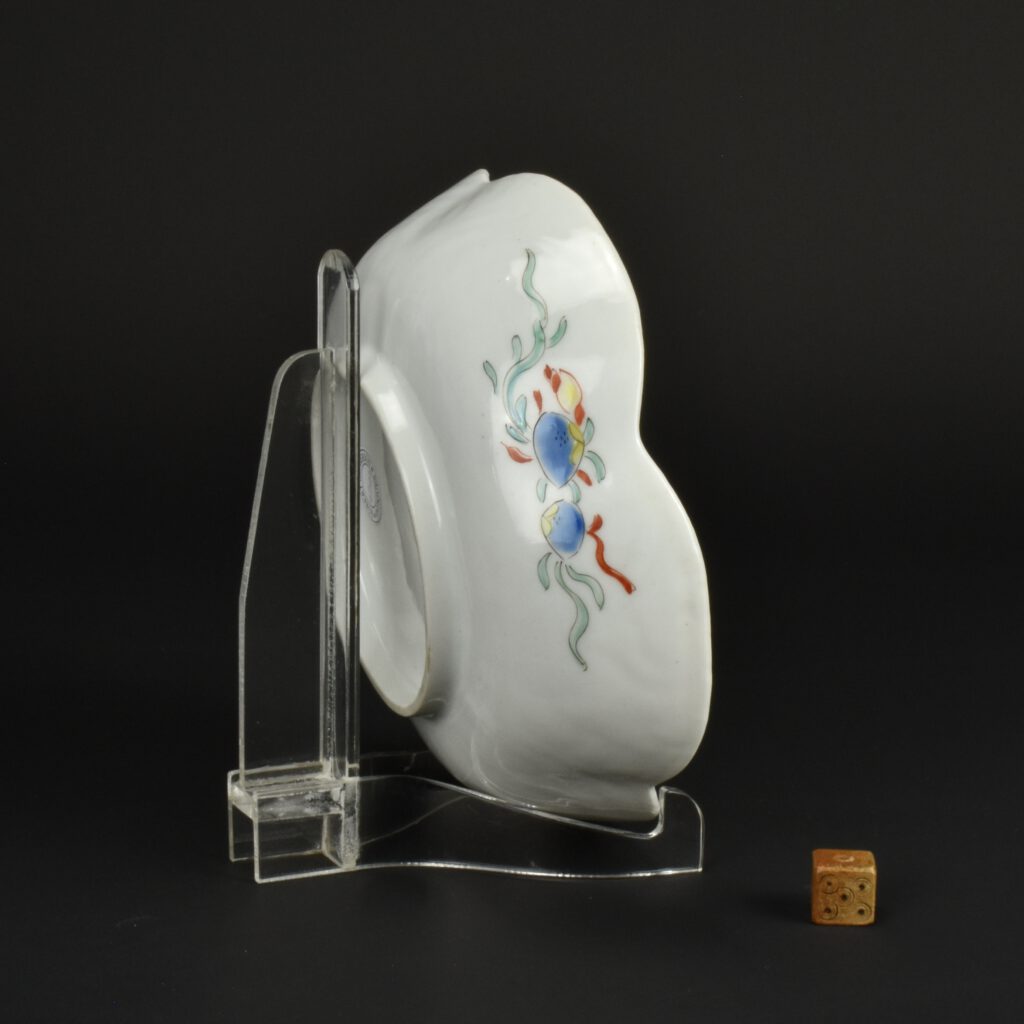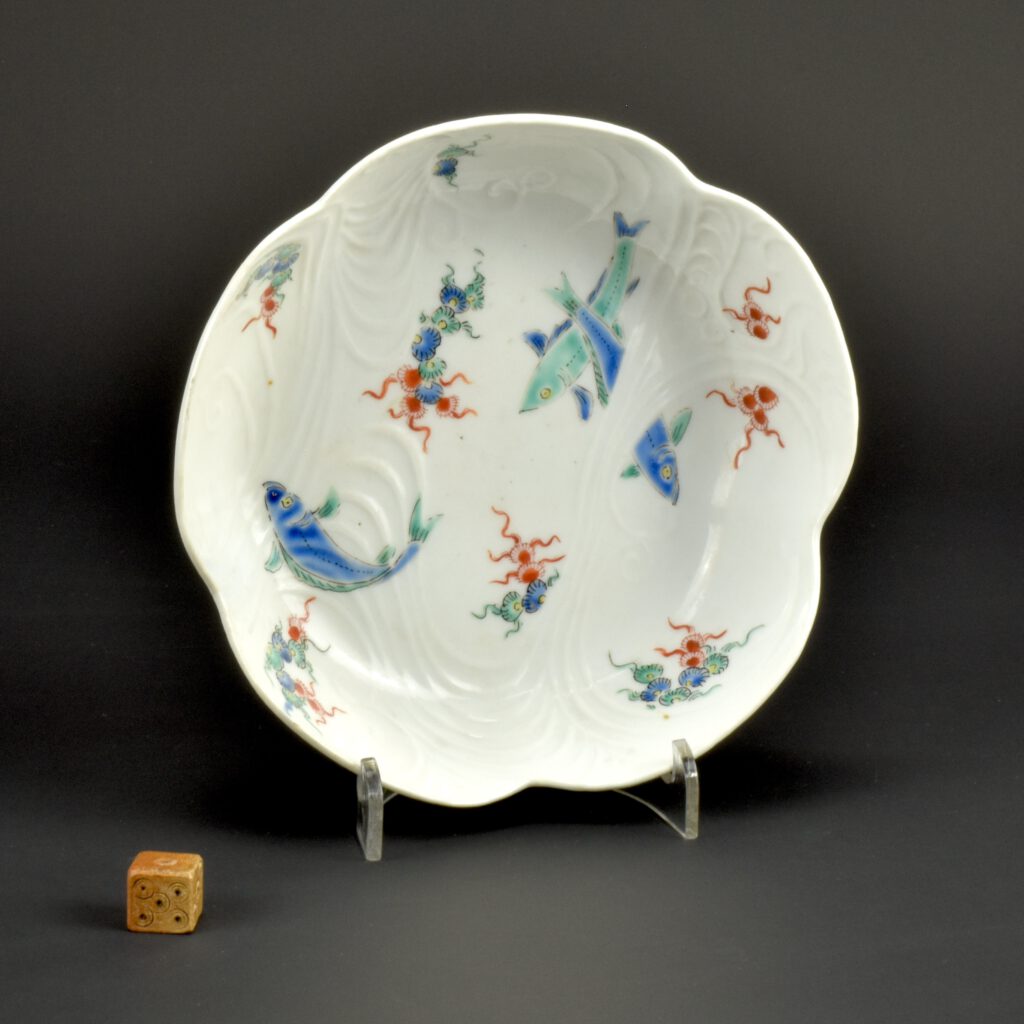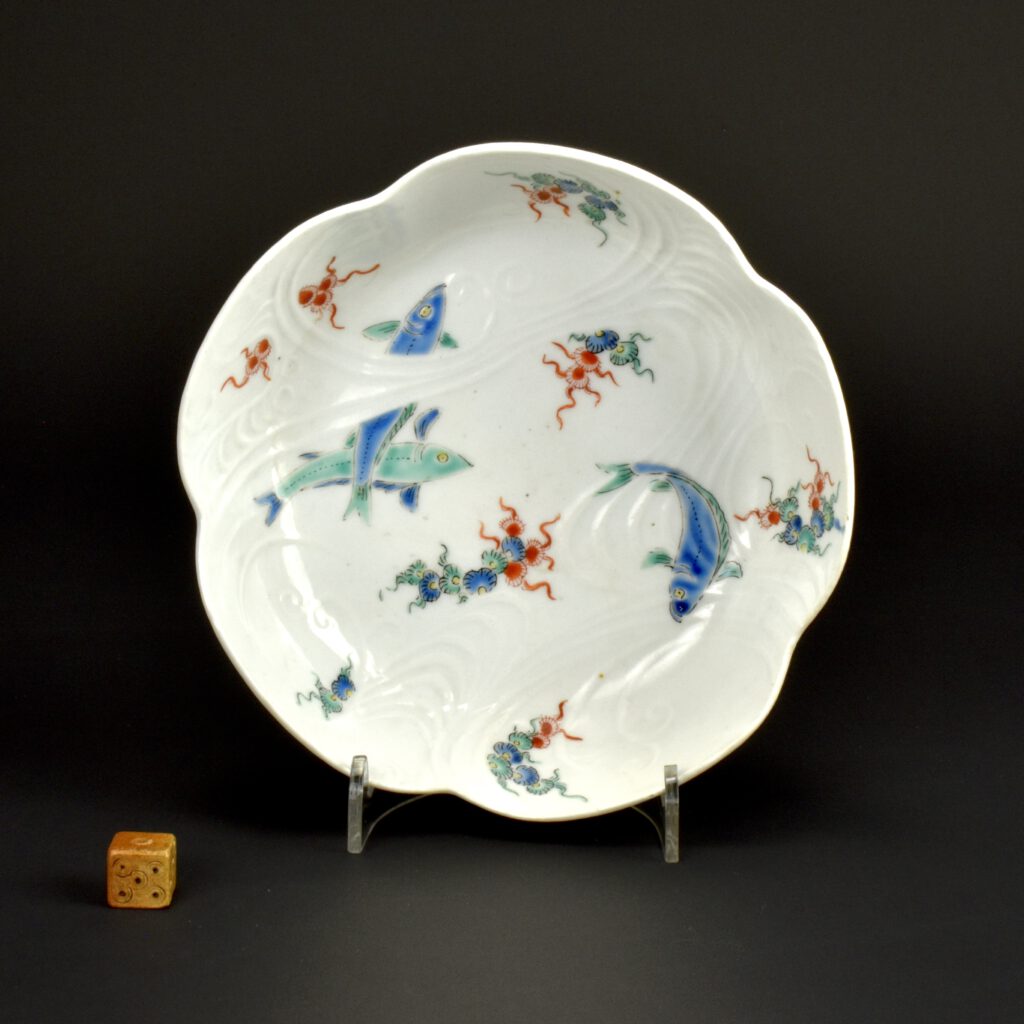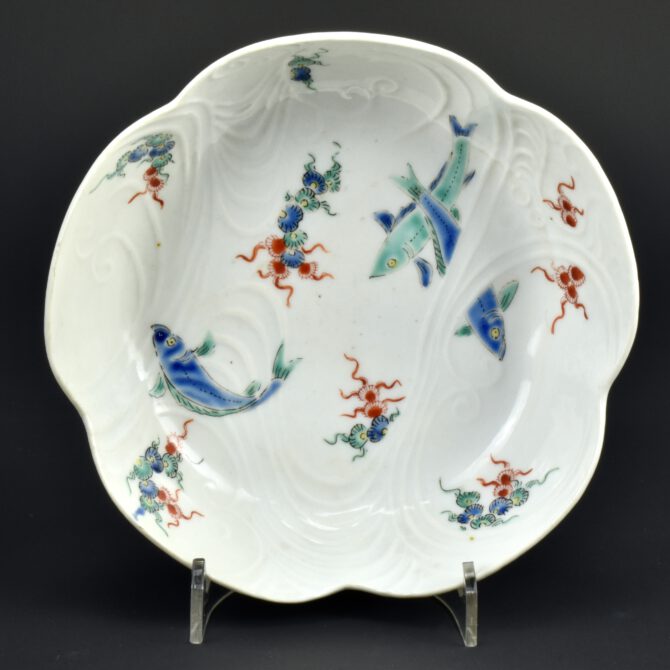
A Rare 17th Century Japanese Kakiemon Porcelain Bowl
A Rare Shallow Kakiemon Porcelain Bowl, Probably Kakiemon Kilns, c.1670 – 1690. This very unusual design consists of fish swimming in a ripped swirling current or perhaps a waterfall. The moving water is represented by crisply moulded lines, the brightly coloured enamelled fish swim over and under the moulded water among aquatic plants painted in bright enamels. This thinly Japanese Kakiemon porcelain bowl is made of Nigoshide porcelain and decorated with bright Kakiemon enamels. This specific type of porcelain, Nigoshide, refers to a fine milky-white porcelain body that glows with a warm tint, in Japan it is said to be reminiscent of rice-water. See below for other 17th Century Kakiemon porcelain bowls from our Sold Archive.
See Below For More Photographs and Information.
SOLD
- Condition
- There is a small restored chip to the rim that has been filled and sprayed ; see the Photograph Gallery below.
- Size
- Diameter 14.1 cm (5.58 inches). Height 4.6 cm (1.82 inches).
- Provenance
- N/A
- Stock number
- 27122
Information
Kakiemon Porcelain
While there is much debate about what was actually made at the Kakiemon kilns, and was made at Arita, it seems clear that the Nigoshide body was exclusively used at Kakiemon. There has been allot of Japanese research undertaken at the Kakiemon kilns, and fragments of porcelain as well as moulds have been recovered from the kiln sites, unfortunately I have only found this information in Japanese books (in Japanese). Nigoshide refers to a fine milky-white porcelain body that glows with a warm tint, in Japan it is said to be reminiscent of rice-water. While white porcelain usually sports a blue tint, Nigoshide porcelain has a soft milky-white appearance. Nigoshide was invented in the 1670s as the perfect porcelain body for complimenting the brilliant polychrome overglaze enamel colours created at Kakiemon. It is notable that the Kakiemon enamel decorated pieces with underglaze blue do not use the Nigoshide body, yet fragments of this type have been recovered from the Kakiemon kiln sits. The main period of production of Kakiemon Nigoshide ware was from about 1670 to 1690. Due to lack of the right materials and economic cutbacks, Nigoshide porcelain went out of production by the mid-18th century, however there was a notable decline in production from around 1690.
Kakiemon decoration is usually of high quality, often delicate and with well-balanced asymmetric designs. The designs were normally quite sparse emphasizing the. Kakiemon porcelain was decorated with a great variety of imaginative designs which include elements such as the `banded hedge`, `flying squirrel`, and the `Quail and Millet` design in the West. The `Three Friends of Winter` were also a very popular group of designs, other subject taken from nature include flowers (especially the chrysanthemum, the national flower of Japan) as well as birds and rock-work. Figural subjects such as the so-called `Hob in the Well` were also popular. This design illustrates a Chinese folk tale where a sage saves his friend who has fallen into a large fish-bowl by throwing stones at it, breaking open the pot. Banded-Hedges were a formal device within Japanese traditional gardens, they were often incorporated in designs, includes `The Three Friends of Winter` (Pine, Bamboo and Prunus). These three plants signify perseverance, as neither the pine nor the bamboo shed their leaves in winter and the plumb (Prunus) flowers at the very end of the winter, heralding the arrival of spring.
Kakiemon Bowls
Robert McPherson Antiques Sold Archive
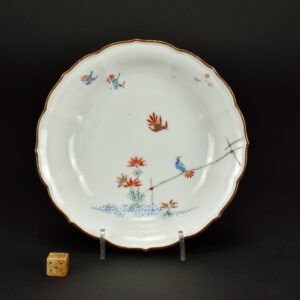
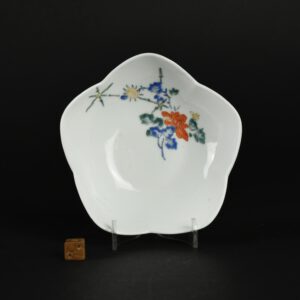
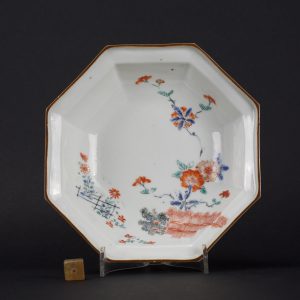
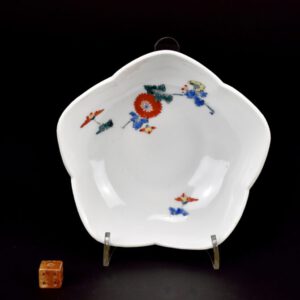
The opaque white milky Nigoshide porcelain was used on the finest pieces, it appears that it was reserved for fine quality enamelled decoration and the secret of its production was guarded well. Kakiemon porcelain was decorated with a great variety of imaginative designs which include elements such many of which are well known in the West. Elements of these designs acquired European names early on. For example `banded hedge`, these are actually a brushwood fences, `flying squirrel`, these are tree shrews and the`Quail and Millet` design. The `Three Friends of Winter` were also a very popular group of designs, other subject taken from nature include flowers (especially the chrysanthemum, the national flower of Japan) as well as birds and rock-work. Figural subjects such as the `Hob in the Well` were also popular. This design illustrates a Chinese folk tale where a sage saves his friend who has fallen into a large fish-bowl by throwing stones at it, breaking open the pot. Banded-Hedges were a formal device within Japanese traditional gardens, they were often incorporated in designs, includes `The Three Friends of Winter` (Pine, Bamboo and Prunus). These three plants signify perseverance, as neither the pine nor the bamboo shed their leaves in winter and the plumb (Prunus) flowers at the very end of the winter, heralding the arrival of spring.
See below for more photographs and references.
SOLD
Condition
In perfect condition, some minute firing spects to the glaze.
Size
Diameter 12.6 cm (4 3/4 inches)
Provenance
An English private collection formed in the 1960s.
Stock number
26109
References
The Burghley Porcelains, An Exhibition from The Burghley House Collection and Based on the 1688 Inventory and 1690 Devonshire Schedule (Japan Society, New York, 1986. ISBN 0-913304-23-9). Page 249, item 104.
A Rare Dutch Decorated Kakiemon Style Dish
Robert McPherson Antiques
Sold Archive - 24553.
